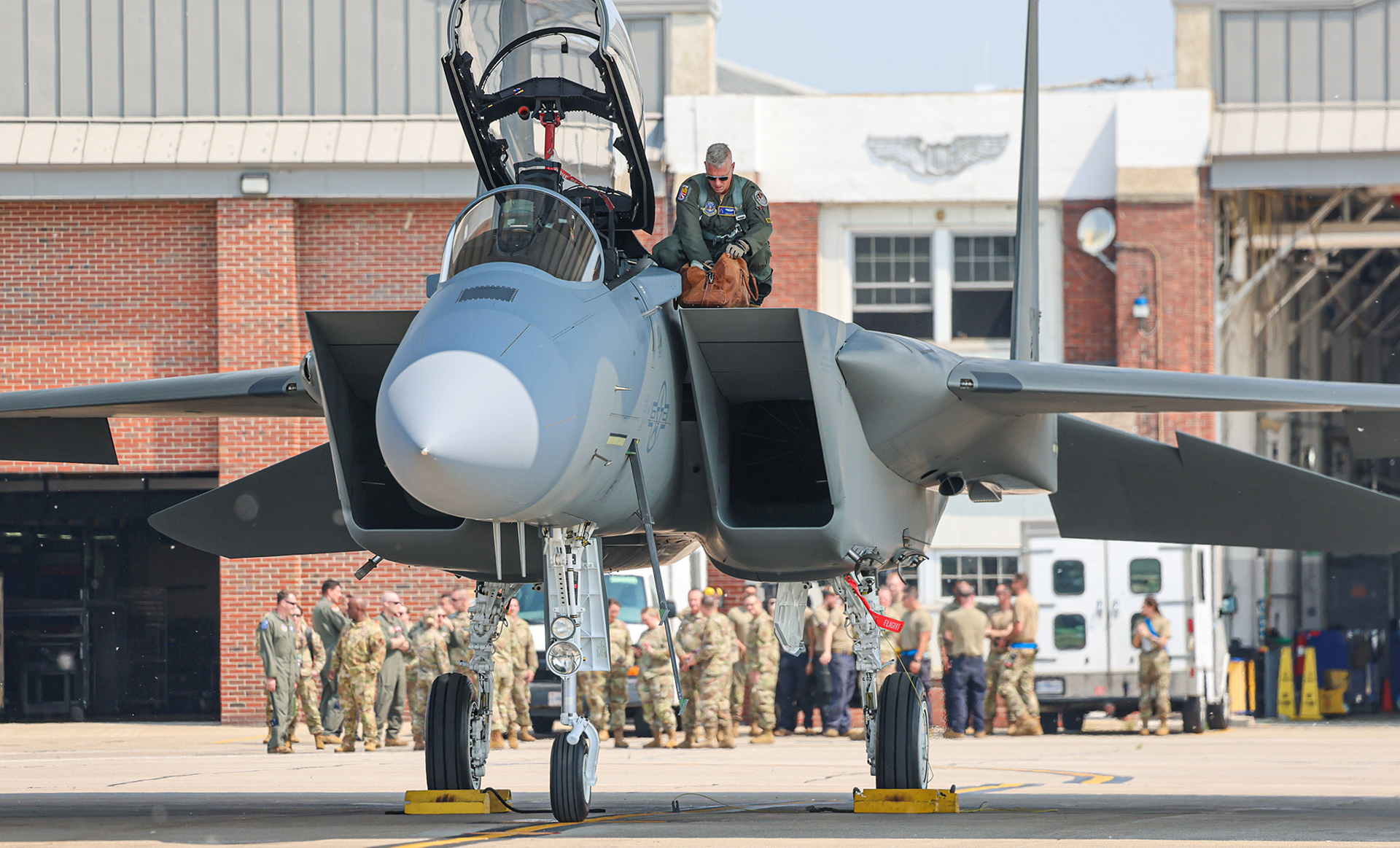With the DoD finally delivering its Fiscal Year 2026 budget proposal to the public, we are getting hard details as to the Trump administration’s military procurement plans. There have already been major shifts in air combat programs. Boeing’s E-7 radar jet is in real trouble, but the company’s F-15EX Eagle II fighter that is being delivered now to the USAF is seeing a significant boost. The program, which has seen drastic fluctuations in planned fleet size, will grow from 98 aircraft to 129.
In all, the proposed FY26 budget has $3B set aside for the latest iteration of the iconic 4th generation fighter, according to a senior U.S. Air Force official who answered TWZ‘s question as to the Pentagon’s latest F-15EX’s plans at a press event today. They added that the program of record would become 129 aircraft under the new budget request. The growth in fleet size comes nearly two months after Trump made the surprise announcement that the Michigan Air National Guard, which is losing its A-10 Warthogs, will be reequipped with the F-15EX.

Still, that number doesn’t quite add up with what we know about the projected force structure, as 98 aircraft plus 21 would be 119. We reached out to the Air Force for clarification, and the response we received was as follows:
“The FY26 PB requests 21 F-15EX aircraft. The currently planned total for F-15EX is 129 aircraft. The total includes F-15EX funding within the draft Reconciliation bill.“
Regardless, we know the USAF is at least buying 21 more F-15EXs in order to equip the Michigan ANG, but it seems like that actual number is 31 more, based on the official answers to our questions.
Michigan’s 21-aircraft squadron is unique among the F-15EX fielding plans. Before Trump’s announcement, it was planned for each unit to receive 18 aircraft, a total inventory (primary and backup) of three fewer jets than a standard F-15C squadron today. It is possible that part of the new 129 inventory number includes ‘plussing-up’ other units back to 21 jets.
As it sits now, Portland, Fresno, New Orleans, and two squadrons at Kadena Air Base in Okinawa, Japan, are slated to get the F-15EX. This would equate to 90 jets. That left eight for test and evaluation, as well as training, out of the 98 total aircraft inventory. If all of those squadrons were expanded to 21 jets, this would equal 105 aircraft. Then you have Michigan, which would bring the figure up to 126 if all squadrons go to the 21-aircraft size. Three jets would be left over to satisfy test, evaluation, and training requirements, which will probably be done on the F-15E with additional training at the frontline squadrons themselves. Ten aircraft would be left over if the squadrons remain the original size, with Michigan being the only larger one, and having eight aircraft left over for testing and other duties. Based on these numbers, the USAF could field one more squadron of 18 aircraft if all spare aircraft were pushed into active units, and training was moved to the F-15E, and test and evaluation, along with advanced sub-type training, was done with the aircraft in active units.

Regardless, Boeing is likely very happy that the USAF and the administration see enough promise in the F-15EX to increase its investment in it. The aircraft largely aced its test campaign, which you can read more about here. Soon, it will be the only aircraft being produced on the company’s storied fighter production line in St. Louis. This also comes after Boeing’s big win of the F-47 Next Generation Air Dominance fighter contract.
At the same time, Lockheed got hit with a drop in F-35 procurement numbers in the latest budget request, with funds being put into the Block 4 upgrade initiative, as well as sustaining existing aircraft, instead of maximizing the order book. Forty-seven F-35s will be bought by the DoD instead of 74. Still, the firm has many outstanding orders from international customers, and that book only continues to grow.
As always, Congress will have to approve this budget request for it to be signed into law, but as it stands now, the F-15EX is sitting pretty.
Contact the author: Tyler@twz.com
